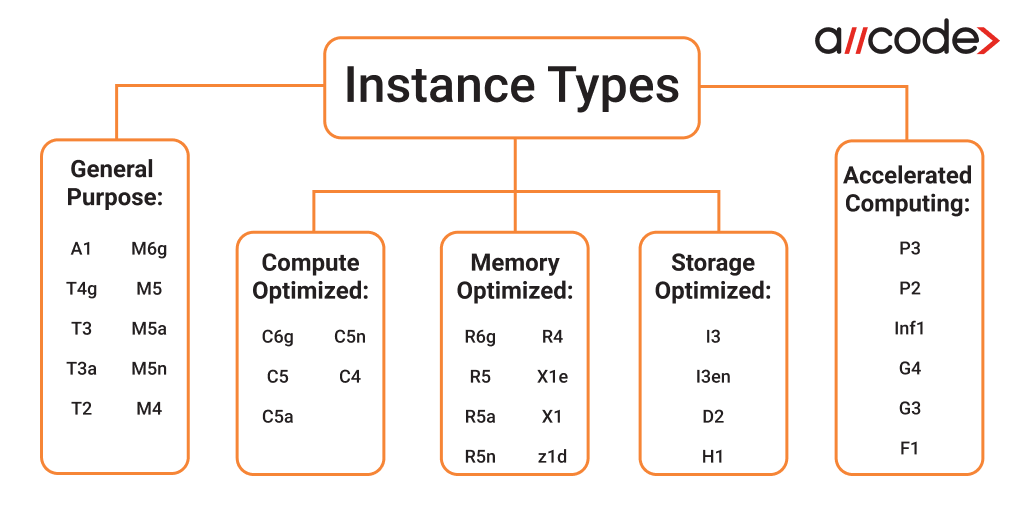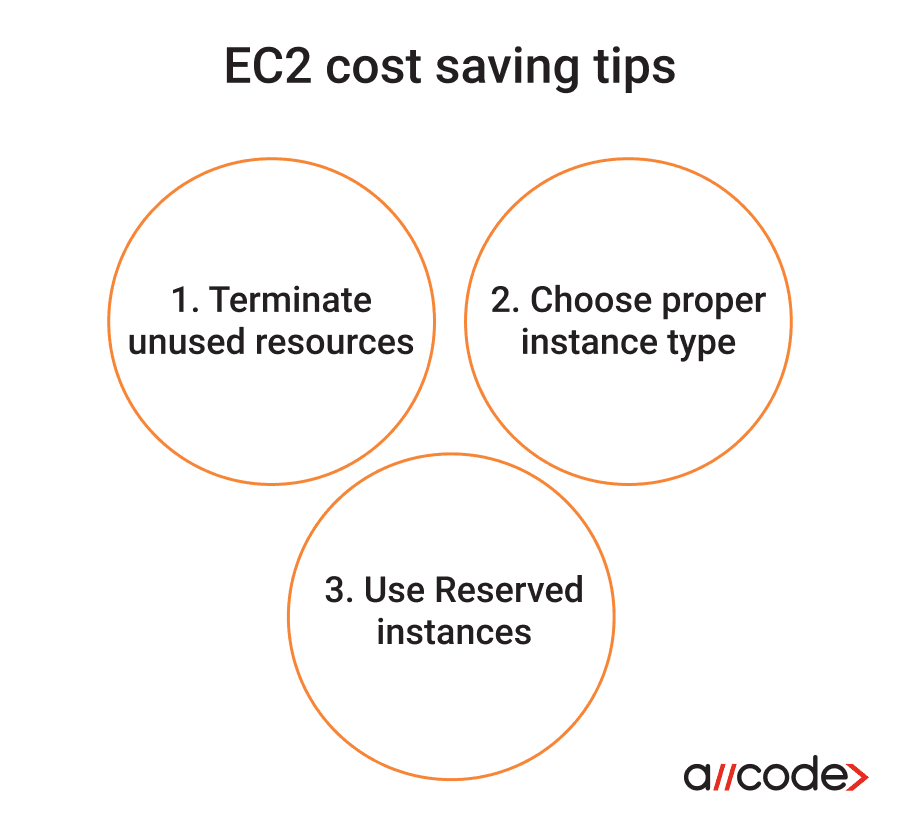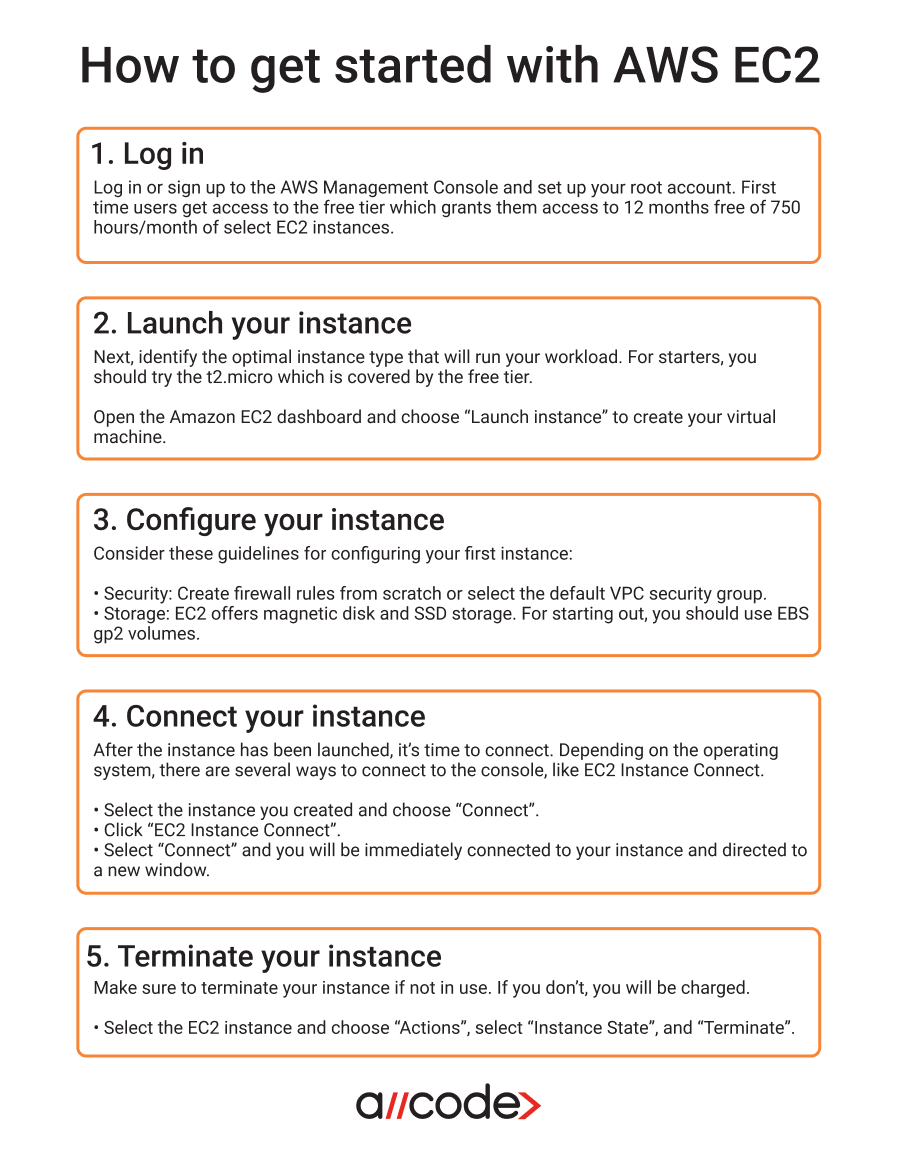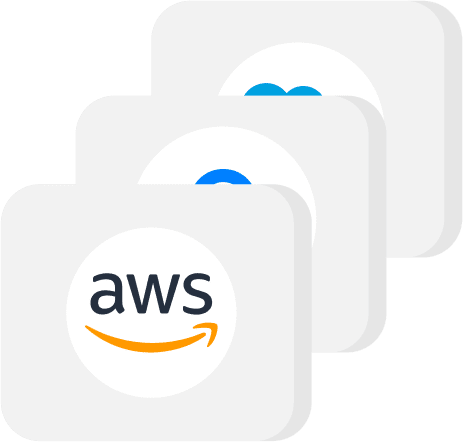
What is Amazon AWS EC2? – Elastic Compute Cloud
A quick overview of Amazon EC2
Amazon Elastic Compute Cloud (AWS EC2) is a cloud-based service that enables extensive, seamless control over your resources. Deploy the EC2 interface or the application programming interface (API) to securely scale capacity with straight forward features while running reliably on Amazon’s trusted cloud computing environment.
Why Amazon EC2?
Elastic web-scale computing
On other cloud platforms, it can take hours or even days to scale capacity. With AWS EC2, users can increase and decrease workloads in minutes; allowing an immediate reaction to sudden changes all the while avoiding the expense of unneeded, underused resources. Amazon EC2 helps save time and provide the necessary processing power for big data decision-making by offering scalable computing resources that can quickly handle large workloads.
Complete control
EC2 grants you root passage to each instance so that you can interact with them as you would any machine. Never use more capacity than necessary; simply alternate resources during peak periods and scale them down when the demand is low through the EC2 web interface or an API.
Flexible cloud hosting
Developers don’t have to worry about limited instance options, operating systems, and software packages. With Amazon EC2, users can allocate memory, CPU, instance storage, and the boot partition size according to their specific operating system and application. In cases where existing servers may not have sufficient power to process data within the required timeframes, EC2 instances can be utilized to deliver fast and efficient results.
Secure
Amazon EC2 works in harmony with Amazon Virtual Private Cloud (VPC) to provide secure, resilient network functionality for processing resources. Users decide which instances remain private or public with a vast range of IP capabilities.
Easy integrations
Other Amazon services can easily integrate with Amazon EC2, including AWS S3, AWS RDS, AWS SQS, and more for enhanced processing and storage solutions.
Reliable
Some cloud platforms struggle with the fallibility of replacement options for developers during outages or a spike in demand for resources. EC2 fulfils the promise for rapid and reliable commission instances at the requisite magnitude and moment.
Amazon EC2 instances
EC2 instances are virtual servers inside Amazon’s Elastic Compute Cloud that are designed for running applications on the cloud and are isolated from the underlying base OS.

General purpose
General purpose instance types offer extensive throughput, memory and networking resources. Typically, general purpose instances are used for workloads with equal proportions, such as web servers and code repositories.
Instances:
A1, T4g, T3, T3a, T2, M6g, M5, M5a, M5n, and M4.
Compute optimized
Compute optimized instance types offer dedicated support for high maintenance processors and are ideal from compute-bound applications. These instances support workloads that require batch processing, media transcoding, speedy web servers, gaming servers, and other compute excessive applications.
Instances:
C6g, C5, C5a, C5n, and C4.
Memory optimized
Instances which fall under the memory optimized category, deliver accelerated performance for jobs that demand fast processing for memory-intensive data sets.
Instances:
R6g, R5, R5a, R5n, R4, X1e, X1, High Memory, and z1d.
Accelerated computing
Accelerated computing instances perform functions, such as floating point number calculations, and graphics processing using hardware accelerators and coprocessors.
Instances:
P3, P2, Inf1, G4, G3, and F1.
Storage optimized
Storage optimized instances are designed for local storages that have high, sequential read and write access with very large data sets. These instances can deliver tens of thousands of low-latency, random I/O operations per second.
Instances:
I3, I3en, D2, and H1.
Additional Configuration Options
Security Groups: Control inbound and outbound traffic to your instances.
Key Pairs: Securely connect to your instances using SSH keys.
Elastic IPs: Static IP addresses that can be allocated and reassigned.
Auto Scaling: Automatically adjust the number of instances based on demand.
Elastic Load Balancing: Distribute incoming traffic across multiple instances.
Need help with AWS EC2?
Managing your Amazon EC2 instances
Monitoring
Monitoring is an important part of maintaining highly functional EC2 instances. Using AWS CloudWatch, engineers can easily monitor and automate their instance capacity with real-time analytics at their disposal.
Networking
Using Amazon VPC, developers can adjust their instance IP addresses with support for both IPv4 and IPv6.
Security
Leveraging Amazon Identity and Access Management (IAM), you can adjust permissions seamlessly so that certain users only have access to particular services, applications, etc.
Storage
Amazon provides exceptional storage options for your instances, and when integrated with Elastic Block Storage, you get block level storage volumes.
CLI and SSH
Aside from the AWS management platform you can also directly access the Command Line Interface of your EC2 instance and install, delete and configure the instance with complete control.
EC2 vs S3
Amazon EC2 offers cloud-based virtual servers, while Amazon Simple Storage Service (S3) offers storage. Although not compatible in all situations, when used together, they can create amazing synergy.
Many users leverage EC2 for hosting websites or web apps. Users can easily integrate EC2 with S3 for hosting the static data from the website or web app.
For backing up EC2 instances, programmers can make use of S3 buckets and also share data between instances.
Amazon EC2 integrated features and services
AWS EC2 has an abundance of integrated features and services tailored toward building scalable, enterprise-class applications. Adopt a few of these features to optimize the effectiveness and production of your virtual cloud-based servers.
Bare Metal instances
With Bare Metal instances, applications get direct access to the processor and memory of the underlying server. Bare metal is ideal for workloads that require access to hardware features, or for applications that operate in on-premises environments.
Amazon EC2 Fleet
Take advantage of AWS EC2 Fleet to optimize compute performance and cut costs by sending a single API call and provision capacity for different EC2 instance types, Availability Zones, and purchase models.
Amazon EC2 Auto Scaling
With auto scaling, programmers can effortlessly increase and decrease their capacity according to pre-defined specifications. Auto scaling is popular for applications where demand fluctuates at certain times.
GPU compute instances
Users who require intensive floating point processing power will benefit from GPU compute instances, like P3 with up to 8 NVIDIA® V100 Tensor Core GPUs.
GPU graphics instances
Amazon EC2 offers instances, such as G3, which provide high graphics capabilities with access to NVIDIA Tesla M60 GPUs. These GPU graphics instances are primarily suited for 3D visualizations, 3D rendering, application streaming, video encoding, and more.
Optimized CPU instances
Gain greater control over your EC2 instances on two fronts with the Optimize CPUs feature. First, specify a custom number of vCPUs. Second, disable multi-threading for workloads that perform well with single-threaded CPUs.
Multiple locations
Instances have multi-region configuration capabilities with a wide range of availability zones. Sometimes, there are outages in areas which would require developers to quickly change locations to avoid downtime. With the multiple location support, this is possible!
Storage options
Diverse tasks bring forth variable requirements that exceed built-in instance storages. There are services like Amazon EBS and Amazon EFS which are easily integrated and extend the storage support for EC2 instances.
High Performance Computing (HPC) clusters
Massive workloads can achieve the same high-volume analytic networking functionality as custom-built infrastructure while taking advantage of the deliverability and cost of Amazon EC2.
Amazon EC2 Enhanced Networking
Enhanced Networking enables cloud-computists to benefit from low network capabilities and latency while getting a higher pack per second (PPS). This feature leverages a network visualization stack that provides higher I/O performance and reduced CPU utilization.
Amazon EC2 Pricing
When it comes to calculating Amazon EC2 pricing, it’s important to consider not only the compute costs but also other related expenses. With Amazon EC2, you can pay for computing resources either by hour or by second without the need for upfront contracts or payments. This means you only pay for what you use, providing you with cost efficiency and scalability. EC2 is a vital service offered by the AWS cloud that allows users to rent servers offsite at Amazon’s data centers worldwide. Why rent servers? Because investing in that infrastructure for your own business can be costly both in time and money, especially if you aren’t always utilizing these resources.
However, it’s crucial to keep in mind that there are additional costs to consider when utilizing Amazon EC2. These costs can include services such as block storage, egress traffic, premium support, load balancing, and IP addresses. These variables can change over time based on usage, making it challenging to predict the exact costs you may incur. If your compute power isn’t matching your workloads, then Amazon EC2 instances can be a solution—a solution to a problem you may not even realize you have.
To truly understand, control, and optimize your Amazon EC2 costs, it is essential to factor in these related expenses. By taking into account the additional services and resources you require, you can create a more accurate pricing scheme and ensure that you have a comprehensive understanding of the overall costs associated with using Amazon EC2. This knowledge enables you to make informed decisions and effectively manage your resources while maximizing cost-effectiveness. In addition, Amazon EC2 offers significant benefits beyond cost considerations. With Amazon EC2, you can eliminate the need for hardware infrastructure maintenance, allowing you to focus on utilizing server resources without the hassle of managing hardware. Furthermore, the scalability of Amazon EC2 allows you to easily handle varying workloads by accessing on-demand EC2 instances when needed, ensuring efficient resource utilization and optimal performance.
Free tier
In the AWS free tier, you have access to various services, including EC2 instances. Specifically, the free tier for EC2 provides 750 hours of Linux and Windows t2.micro instances each month for a duration of one year.
On-demand
Depending on which instances you run, pay either for compute by the hour or by the second with no upfront contracts or payments required - the only cost is for what you use.
Spot instances
Spot instances enable you to request spare AWS EC2 compute capacity for up to 90% off the On-demand price. Prices are set by EC2 and adjust incrementally based on long term supply and demand for instance capacity.
Savings plans
By using a savings plan on AWS EC2, you get a flexible, low cost pricing model in exchange for a 1-3 year commitment of a specified usage and measured by $/hour.
Reserved instances
Reserved instances offer discounts of up to 75% compared to on-demand pricing. This plan is assigned to a specific Availability Zone, provides a capacity reservation, and helps you launch with confidence, as you only pay for the instances as-needed.
Dedicated hosts
Leverage your existing server-bound licenses, such as Windows Server, SQL Server, and SUSE Linux Enterprise Server, to significantly lower your costs.
Pricing calculator
Engineers use the EC2 cost perf calculator to configure an estimate that suits their unique business or personal needs. Create a quote for your instances and determine the optimal pricing option for your organization.
Amazon EC2 cost optimization tips
Want to make your employer happy by reducing company expenditures? Plug in a few of these tips to immediately lower costs of your AWS EC2 instances. Check our article on Cost savings on AWS for more cost optimization tips.
Terminate unused instances
To optimize your EC2 budget, start by eliminating any unemployed instances. With services like Elastic Beanstalk, developers can deploy and redeploy instances as-needed to avoid racking up unnecessary charges.
Choose the proper instance type
Make sure that you are running the correct instances, as different instances have different pricing structures. Consider your personal use case when determining the instance that’s best for you - don’t just base your decision on what somebody else is using!
Use Reserved instances
Using a reserved instance will save you money in the long run. If you plan to be operational and scale your business, which you surely do, leverage reserved instances and save up to 75% of your hourly rate by accessing a 1-3 year contract.

Get Started With Amazon EC2
1. Log in
Log in or sign up to the AWS Management Console and set up your root account. First time members get access to the free tier which grants them access to 12 months free of 750 hours/month of select EC2 instances.
2. Launch your instance
Next, identify the optimal instance type that will run your workload. Try starting with the t2.micro, which is covered by the free tier. Consider starting with the t2.micro instance, which falls under the free tier category.
Open the Amazon EC2 dashboard and choose “Launch instance” to create your virtual machine.
3. Configure your instance
Consider these guidelines for configuring your first instance:
- Security: you can either build firewall rules from scratch or opt for the default VPC security group.
- Storage: EC2 provides both magnetic disk and SSD storage options. Use EBS gp2 volumes to begin.
4. Connect your instance
After the instance has launched, it’s time to connect. Depending on the operating system, there are several ways to connect to the console, like EC2 Instance Connect.
- Select the instance you created and choose “Connect”.
- Click “EC2 Instance Connect”.
- Proceed with “Connect” to establish an immediate connection to your instance and open a new window.
5. Terminate your instance
Remember to terminate your instance when not in use to avoid unnecessary charges on your account.
- Select the EC2 instance, go to ‘Actions’, choose ‘Instance State’, and then ‘Terminate’.

Amazon EC2 tutorials
For devs who need an extra boost, AWS offers various hands-on tutorials and tips designed to get you up and running on the spot. Follow some of the training below to get started.
Run commands on an EC2 instance remotely
Optimize EMR clusters with AWS EC2
Configure Amazon EFS file system using EC2 Launch Instance Wizard
Visit here to find other AWS EC2 tutorials
Amazon EC2 Support
Need some extra help optimizing your AWS EC2 instances for peak performance? AllCode is an AWS Select Consulting Partner with 10+ years of experience developing cloud-based solutions for enterprise-scale applications.
Amazon trusts and recommends our services to businesses who need a hand or who are looking to cloudsource their technology stack. We are the experts to guide you down the path for successful use of cloud services.
Why AllCode

Expertise
Our software engineers have at least 10 years of experience working on complex, innovative projects for both startups and Fortune 500 companies.

Multi-vendor relationships
The trust we have built with our vendors makes us a preferred option for any business scale. We enable dynamic support for superior service offerings across various cloud providers.

Flexible
AllCode provides Nearshore, Offshore, and Hybrid delivery models to fit your objectives with precise skills and ample resources right when and where you need them.
Related Articles
3 Ways Gen AI and AWS can Enhance Your Business
Amazon is on the cutting edge of new technologies. They have been increasingly experimenting with AI and learning algorithms, culminating in their most recent breakthroughs in Generative AI. Developers and technology enthusiasts have access to their innovations through the tools available on AWS.
Business Owner’s Guide to DevOps Essentials
As a business owner, it’s essential to maximize workplace efficiency. DevOps is a methodology that unites various departments to achieve business goals swiftly. Maintaining a DevOps loop is essential for the health and upkeep of deployed applications.
AWS Graviton and Arm-architecture Processors
AWS launched its new batch of Arm-based processors in 2018 with AWS Graviton. It is a series of server processors designed for Amazon EC2 virtual machines. The EC2 AI instances support web servers, caching fleets, distributed data centers, and containerized microservices. Arm architecture is gradually being rolled out to handle enterprise-grade utilities at scale. Graviton instances are popular for handling intense workloads in the cloud.


